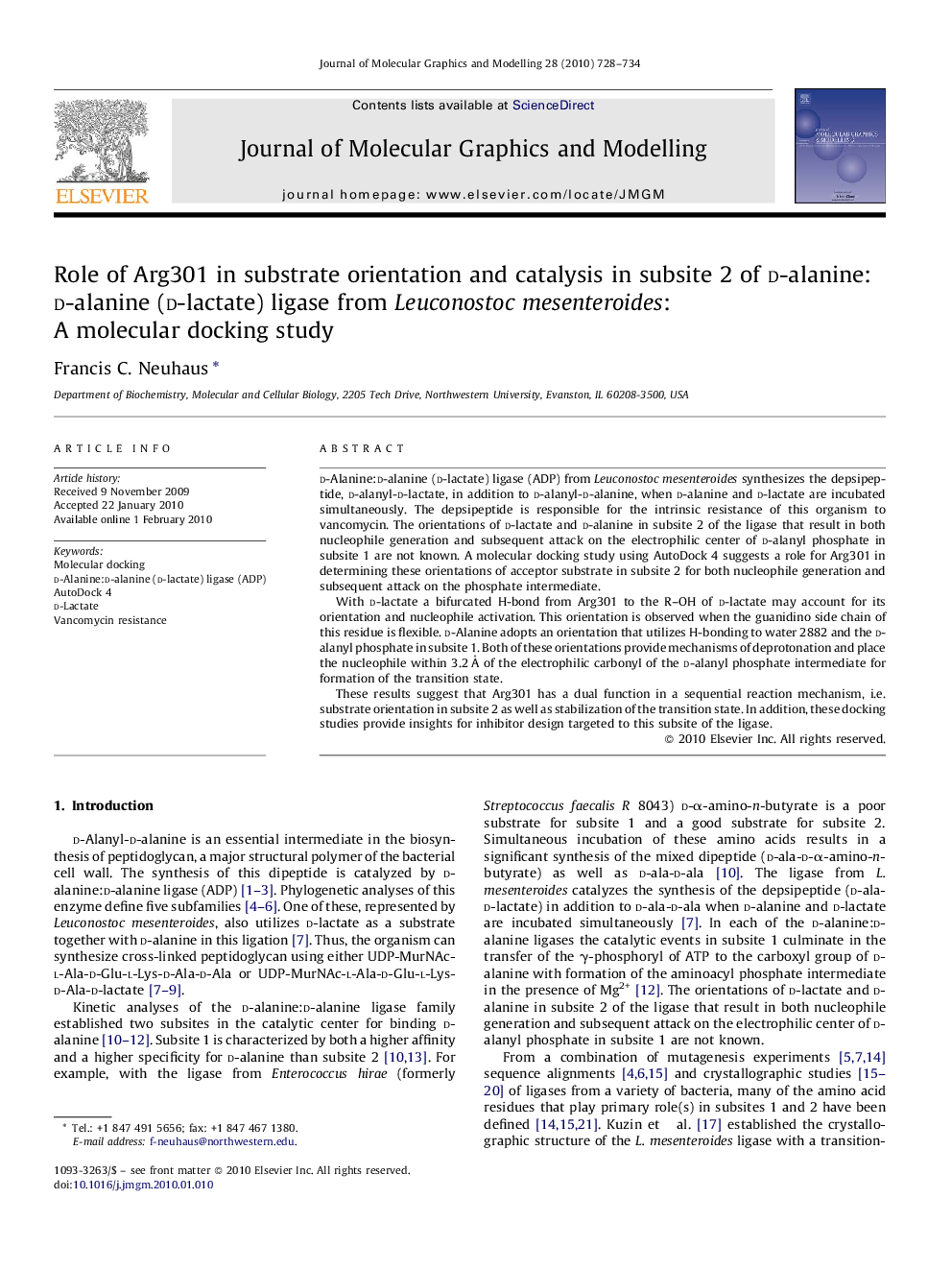| Article ID | Journal | Published Year | Pages | File Type |
|---|---|---|---|---|
| 443543 | Journal of Molecular Graphics and Modelling | 2010 | 7 Pages |
d-Alanine:d-alanine (d-lactate) ligase (ADP) from Leuconostoc mesenteroides synthesizes the depsipeptide, d-alanyl-d-lactate, in addition to d-alanyl-d-alanine, when d-alanine and d-lactate are incubated simultaneously. The depsipeptide is responsible for the intrinsic resistance of this organism to vancomycin. The orientations of d-lactate and d-alanine in subsite 2 of the ligase that result in both nucleophile generation and subsequent attack on the electrophilic center of d-alanyl phosphate in subsite 1 are not known. A molecular docking study using AutoDock 4 suggests a role for Arg301 in determining these orientations of acceptor substrate in subsite 2 for both nucleophile generation and subsequent attack on the phosphate intermediate.With d-lactate a bifurcated H-bond from Arg301 to the R–OH of d-lactate may account for its orientation and nucleophile activation. This orientation is observed when the guanidino side chain of this residue is flexible. d-Alanine adopts an orientation that utilizes H-bonding to water 2882 and the d-alanyl phosphate in subsite 1. Both of these orientations provide mechanisms of deprotonation and place the nucleophile within 3.2 Å of the electrophilic carbonyl of the d-alanyl phosphate intermediate for formation of the transition state.These results suggest that Arg301 has a dual function in a sequential reaction mechanism, i.e. substrate orientation in subsite 2 as well as stabilization of the transition state. In addition, these docking studies provide insights for inhibitor design targeted to this subsite of the ligase.
